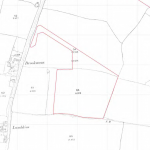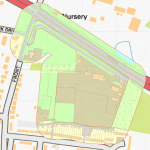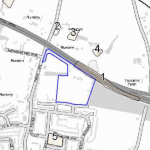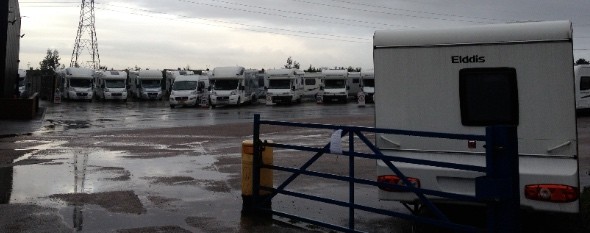Replacement Commercial Building, Upminster, Havering
Case Study Reference: 12-12-07
Planning Authority: London Borough of Havering
Planning Reference: P1229.11 and Q0010.15
Synopsis:
Given the history of the site a contaminated land planning condition was attached to the decision notice for the proposed development.
The first stage of discharging the condition was to prepare a Phase I desk study report in order to determine if the site has the potential to be impacted by elevated levels of contamination, and to determine the source as well as the likelihood of the risk occurring.
 A desk study determines what issues relating to historical contamination may affect the site, this is undertaken by reviewing the site history using a combination of O.S. maps, aerial, plates and street level imagery, a review of data held by regulatory bodies (Environment Agency, local authority, BGS etc.) as well as a site walkover survey.
A desk study determines what issues relating to historical contamination may affect the site, this is undertaken by reviewing the site history using a combination of O.S. maps, aerial, plates and street level imagery, a review of data held by regulatory bodies (Environment Agency, local authority, BGS etc.) as well as a site walkover survey.
The history of the site and surrounds were researched using a combination of Ordnance Survey (O.S.) maps, street level imagery and aerial plates, this revealed that the site comprised of open land until circa 1969 when a number of buildings associated with Alfred House were noted, the site was redeveloped circa 1989.
Survey (O.S.) maps, street level imagery and aerial plates, this revealed that the site comprised of open land until circa 1969 when a number of buildings associated with Alfred House were noted, the site was redeveloped circa 1989.
Two ponds were noted within 75m of the site.
The planning history of the site was reviewed, no salient information was obtained.
T he published geological maps identified the site as being underlain by head which in turn was underlain by London Clay. Deposits of made ground were recorded on the northern area of the site, which appears to be associated with the adjoining road.
he published geological maps identified the site as being underlain by head which in turn was underlain by London Clay. Deposits of made ground were recorded on the northern area of the site, which appears to be associated with the adjoining road.
Data provided by regulatory confirmed the site was occupied by Cranham Caravans.
 On completion of the desk based research a site reconnaissance
On completion of the desk based research a site reconnaissance  visit was undertaken, this confirmed that the site was occupied by a caravan sales company with a bodyshop workshop on site.
visit was undertaken, this confirmed that the site was occupied by a caravan sales company with a bodyshop workshop on site.
Once the walkover survey was completed a qualitative risk assessment was undertaken on the potential sources of contamination identified in the desk study report in order to determine if any warranted further investigation, this concluded that the made ground on the site posed a potential risk to building fabric and water mains.
Given the low sensitivity of the proposed development remediation in lieu of further assessment was proposed.
The report was submitted to discharge the contaminated land planning condition (Q0010.15), the report was sufficient to discharge the condition.




